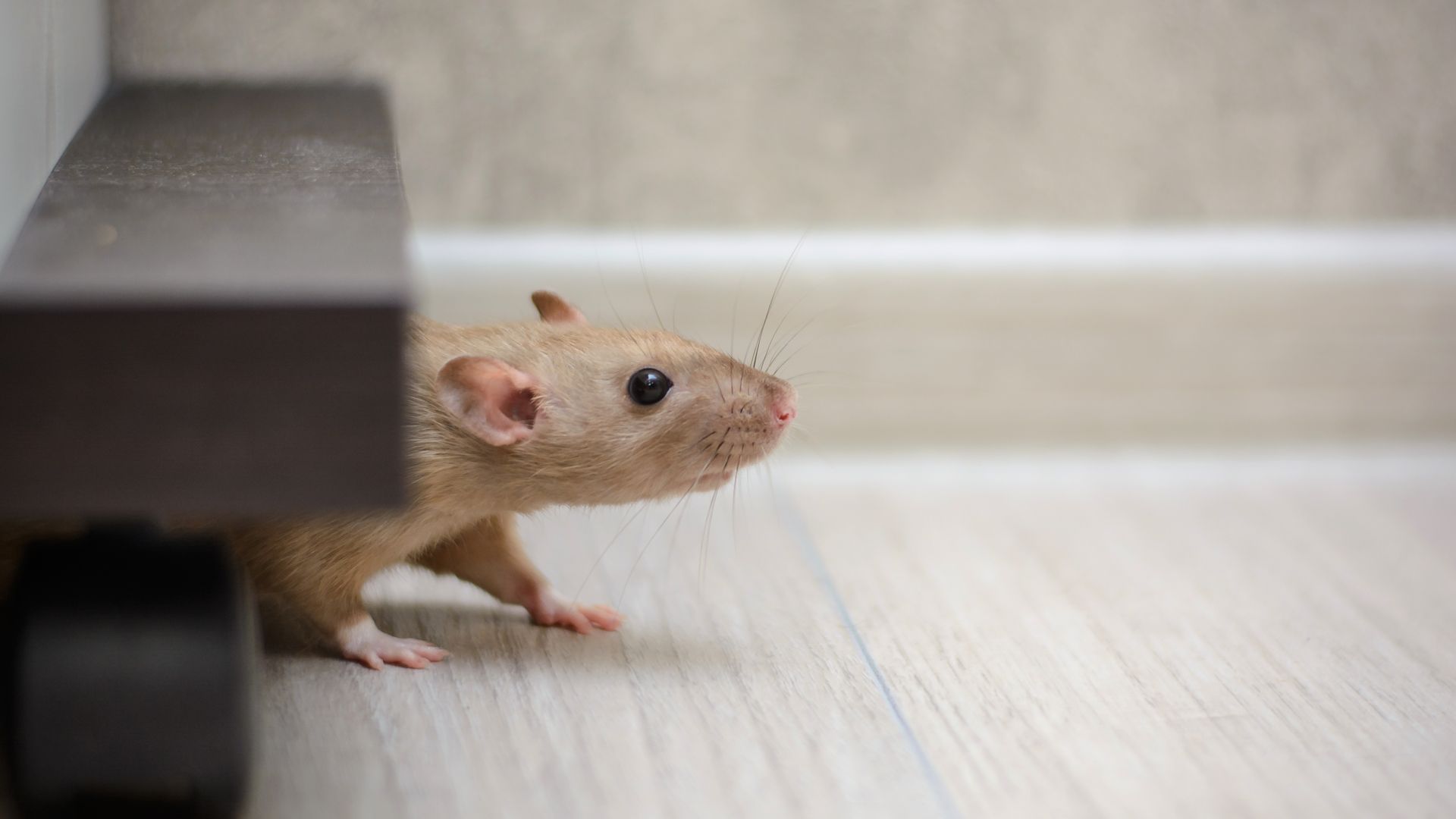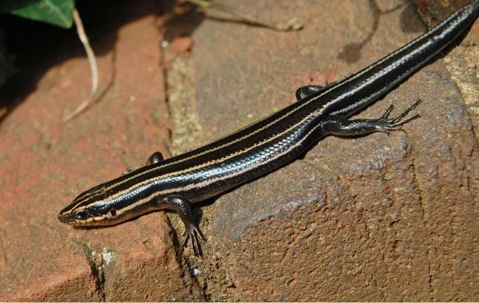Skinks are a diverse family of lizards found in various parts of the world, and the vast majority of them are not poisonous. Instead, they rely on other defense mechanisms to protect themselves from predators. Skinks are often characterized by their elongated bodies, short legs, and smooth, overlapping scales. While they are not venomous or poisonous in the sense that they inject toxins through fangs or stingers, some skinks have developed other means of deterring predators.
Skinks are not typically considered to be poisonous in the sense that they produce toxins harmful to humans or other animals through their bites, stings, or skin secretions. However, there are a few exceptions where certain species of skinks possess glands or adaptations that can be considered mildly toxic or irritating in some way. These cases are relatively rare compared to other poisonous animals like some frogs, snakes, or insects. Here are a couple of examples:
- Blue-Tailed Skink (Plestiodon skiltonianus): This North American skink species is not poisonous but can secrete a foul-smelling substance from its cloacal glands when threatened. While not harmful to humans, this secretion can be unpleasant.
- Fire Skink (Lepidothyris fernandi): The Fire Skink, native to West Africa, is sometimes said to have mildly toxic skin secretions. These secretions are thought to deter predators, but they are not known to be seriously harmful to humans. However, it's essential to handle these lizards with care and wash your hands thoroughly after handling them.
Skinks come in a wide variety of species, and some may exhibit unique adaptations or behaviors. While most skinks are harmless to humans and other animals, it's essential to remember that there may be exceptions, and some species could carry diseases or parasites. Therefore, it's generally advisable to handle any wild animal, including skinks, with caution and avoid unnecessary contact.
In general, the term "poisonous" is not commonly associated with skinks, and their primary defense mechanisms involve tactics such as tail autotomy (shedding) and camouflage. The toxicity levels, if present in certain species, are typically not a significant concern for human health. Nonetheless, it's advisable to treat all wild animals with caution and avoid unnecessary contact, as reactions to substances produced by animals can vary from person to person.
One common defense mechanism among skinks is their ability to shed their tails when threatened. This behavior, known as autotomy, allows them to escape from a predator while the detached tail continues to wriggle, distracting the attacker. The lost tail can later regenerate, although the regenerated tail is often not as long or well-formed as the original.
Skink Secretions
While skinks are not generally considered highly venomous or dangerous to humans, some species have developed specialized skin secretions that can be mildly irritating or toxic to potential predators. These secretions serve as a defense mechanism to deter predators and are often produced in specialized glands, such as cloacal or scent glands. Here's some more information about the potentially toxic skin secretions of skinks:
- Foul Odor: Many skinks have glands near their cloaca (the opening used for waste elimination and reproduction) that can emit foul-smelling substances when they feel threatened. The odor is intended to deter predators by making the skink seem unappetizing or even repulsive. This defense mechanism is more about discouraging potential threats than causing harm.
- Irritating Substances: In some cases, the skin secretions of certain skink species can contain mildly irritating substances. These substances are not typically harmful to humans but can cause discomfort if they come into contact with the eyes, nose, or mouth. The irritation is often temporary and relatively mild.
- Fire Skink (Lepidothyris fernandi): The Fire Skink, native to West Africa, is an example of a skink species that is sometimes said to have mildly toxic skin secretions. While these secretions are not known to cause significant harm to humans, they are thought to be a deterrent to potential predators.
The toxicity of skink secretions varies between species, and the effects on humans are generally minimal. Additionally, the primary purpose of these secretions is to discourage predation by other animals rather than causing harm to humans. Nevertheless, it's wise to handle all wildlife, including skinks, with care and to wash your hands thoroughly after any contact to avoid any potential irritation or allergic reactions.
Can Skinks Bite?
Yes, skinks are capable of biting, but their bites are generally not considered dangerous to humans. Skinks have small, relatively weak jaws and teeth compared to some other reptiles. Their bites are typically not strong enough to cause significant harm or puncture human skin easily.
When skinks do bite, it is often a defensive response when they feel threatened or cornered. They may bite as a last resort to deter a potential predator or when they cannot escape. In most cases, a skink's bite is more likely to be a surprise and a minor inconvenience than a serious concern for humans.
Skinks are generally not aggressive toward humans, and they prefer to use other defense mechanisms, such as fleeing or shedding their tails (autotomy), to avoid confrontation. If you ever encounter a skink and need to handle it for any reason, it's best to do so gently and with care to minimize stress for the lizard and the risk of being bitten.
Skink Bites
Skink bites typically result in minor injuries, and the appearance can vary depending on several factors, including the size of the skink, the force of the bite, and your skin's sensitivity. Here's what you might expect a skink bite to look like:
- Small Puncture Wounds: Skink bites usually produce small puncture wounds on the skin. These wounds may resemble tiny scratches or pinpricks. The size and depth of the punctures can vary based on the skink's size and the force of the bite.
- Redness and Swelling: After a skink bite, you may notice some localized redness and swelling around the bite site. This is a typical response of the body's immune system to a minor injury.
- Mild Pain or Discomfort: Skink bites are not typically very painful, but you may experience mild discomfort or a slight stinging sensation at the bite site. This discomfort is often short-lived.
- Bruising (Rare): In some cases, particularly if the bite was forceful or if you have sensitive skin, you might develop minor bruising around the bite area. Bruising would typically be mild and resolve on its own.
Skink bites are generally not a cause for serious concern or medical attention. They are unlikely to cause significant harm or complications. However, as with any animal bite, it's essential to clean the wound thoroughly with soap and water to reduce the risk of infection. Applying an antiseptic and keeping the area clean and dry can also aid in the healing process.
If you experience any unusual or severe symptoms following a skink bite, such as signs of infection (increased redness, swelling, pus, or fever), it's advisable to seek medical attention. Additionally, if you have concerns about the bite, such as an allergic reaction, consult a healthcare professional.
How To Treat Skink Bites
Treating a skink bite is generally a straightforward process, as these bites are usually minor and not a cause for serious concern. However, it's essential to take a few steps to ensure proper care and prevent infection. Here's a comprehensive guide on how to treat a skink bite:
- Wash Your Hands: Before touching the bite wound, wash your hands thoroughly with soap and clean water to minimize the risk of introducing bacteria to the wound.
- Clean the Bite Wound: Gently clean the bite wound with mild soap and lukewarm water. Use a clean cloth or sterile gauze to do this. Be sure to remove any dirt or debris from the wound. Rinse the area carefully.
- Apply Antiseptic: After cleaning the wound, apply an over-the-counter antiseptic solution or ointment to help prevent infection. Neosporin or a similar product is suitable for this purpose.
- Cover the Wound: Place a clean, sterile bandage or dressing over the bite wound to protect it from further contamination and to keep it clean.
- Monitor for Infection: Keep an eye on the bite wound for signs of infection, which may include increased redness, swelling, pus, or a fever. If you notice any of these signs, consult a healthcare professional.
- Pain Management (If Necessary): If you experience mild pain or discomfort at the bite site, over-the-counter pain relievers like ibuprofen or acetaminophen may help. Follow the dosing instructions on the product label.
- Watch for Allergic Reactions: While severe allergic reactions to skink bites are extremely rare, if you experience symptoms such as severe swelling, difficulty breathing, or hives, seek immediate medical attention.
- Rest and Monitor: Allow the bite wound to heal naturally. Keep it clean and dry, and avoid scratching or picking at the area to prevent infection.
- Seek Medical Attention (If Necessary): If you have any concerns about the skink bite, if the wound becomes infected, or if it does not heal within a reasonable timeframe, consult a healthcare professional for further evaluation and treatment.
Remember that skink bites are typically not serious and are unlikely to cause significant harm. However, proper wound care and hygiene are essential to prevent complications. If you have any doubts or if the bite seems unusual or severe, it's always best to seek medical advice.

